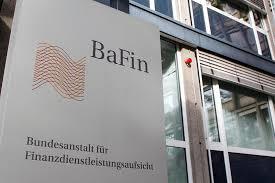All investment transactions are the result of the interplay between the investment fundamentals of risk, return and cost. Transacting derivative deals enables the risk and return characteristics of portfolios to be altered and costs to be controlled or reduced. The fact that, by definition, the value of a derivative is dependent on other underlying assets or input variables, such as index levels, often allows the risk, return and cost parameters of a portfolio to be altered with greater flexibility than trading in the underlying assets themselves. The use of derivatives therefore opens up a much wider set of investment opportunities to the investor compared to just being able to trade in the underlying assets.
The efficiency of derivative transactions is obviously of prime importance. Derivative transactions, like all transactions, involve a deal being struck between counterparties. The price, costs and productive outcome of the transaction determines its efficiency and are areas where value can be added or subtracted. The investment processes and systems of an investment organisation can certainly assist in controlling the efficiency of transactions, but need to be combined with the appropriate knowledge and skills of investment personnel. A pension fund may have the required in-house processes, systems and expertise or it may subcontract certain stages of the investment processes to an external investment manager or investment bank. Like all transactions, if the optimum efficient outcome is to be achieved, there needs to be relevant expertise applied to both the execution and control of derivative transactions.
Determining the market price of a derivative is frequently more transparent for listed derivatives than over-the-counter (OTC) contracts; this immediately appealing feature of the listed derivative is often combined with lower costs and greater liquidity. Indeed, for many asset classes the exposure traded through the listed derivatives market is greater than in the underlying asset itself. Listed derivative contracts are standardised, there is open competition both for price (bid–offer spread) between buyers and sellers and for commissions between brokers. In contrast, executing OTC transactions involves a contract being negotiated directly with the counterparty; there is credit exposure to the counterparty, less direct price competition and extra work is frequently involved in specific tailoring of the non-standardised contract. The counterparty to the OTC will frequently be hedging the market exposure of its position in the listed markets and so will be seeking to charge a margin over and above the price that it pays for the hedge. The above factors combine to give greater scope for higher embedded costs within the OTC contract.
The bid–offer spread on liquid listed derivatives is often competitive compared with the underlying assets. For example, the FTSE 100 future is frequently quoted with a 2 index point or less bid–offer spread in 10 to 15 contracts. This equates to a 4 basis point spread on £570,000–850,000 (e920,000–1.4m) of market exposure. The average bid–offer spread on FTSE 100 stocks is about a factor of 10 larger than that on the future. If you are trying to trade more than this number of contracts immediately the spread may be wider, but with a little patience you will be able to trade in significantly larger size. On a typical day, 30,000 FTSE 100 futures will be traded, which is equivalent to an exposure of £1.7bn.
Sometimes when selecting derivatives from the listed markets, the available choice does not include a contract with the desired underlying exposure. For example, if the portfolio benchmark is the FTSE World Index Europe ex-UK, then there is no listed future with this as its underlying index. The Dow Jones Euro Stoxx 50 is a very liquid European future, but its tracking error versus the above benchmark may not be acceptable. Liquid futures contracts do, however, exist on each of the main European local indices (eg, Cac and Dax) and a basket of these can be combined to gain exposure similar to that of a FTSE benchmark. Such a basket will not give perfect tracking as full replication of the benchmark has not been achieved. However, this tracking error may be acceptable in exchange for such benefits as lower cost, ease of trading and speed of obtaining exposure.
The associated costs of transactions in liquid derivatives are often lower than for transactions in the underlying assets. A quarterly rolling future like the S&P500, FTSE 100, Cac or Dax might only cost a few basis points of underlying exposure per annum in exchange fees and commission. Many of the liquid monthly rolling futures contracts also have competitive commission costs. Custody costs for derivatives can also be lower than for the underlying assets (eg, equities).
Futures and contracts for differences (CFDs) in the UK are not subject to stamp duty, whereas purchases of the underlying shares are liable to 0.5% stamp duty. The London International Financial Futures & Options Exchange (Liffe) has now also launched individual stock futures based on European and US shares, volumes are still quite low and most liquidity is within the underlying stocks or the stock options markets.
The pricing of derivatives needs to be thoroughly understood to trade them efficiently. Even for simple derivatives like futures, various input variables such as index levels, dividend and interest rate data are required to calculate the fair (theoretical) value. The actual dividends and interest rates should be the post-tax receipts applicable to the particular investor. Interest rates should also be for the appropriate credit and for the period to expiry of the future. At any point futures may be trading a little above or below their fair value (basis risk); this variance from fair value is generally quite small as it can easily be arbitraged by simultaneous transactions in the underlying asset and the future.
A future expires after one to three months so, if exposure is to be maintained, it needs to be sold and a later dated one purchased (a futures roll). A futures roll might be a cost or benefit depending on how the spread between the two is trading versus the fair spread for a particular investor (roll risk).
The systematic processes that leading derivative managers employ gives rise to efficient trading, tight cost control and effective risk monitoring. Derivative managers routinely monitor, real time, the trading opportunities in listed derivatives. Mispricing opportunities do occur. Although they are not often large or available for long, they are still opportunities where incremental value can be added.
All investment holdings require ongoing exposure and risk control monitoring. For derivatives, additional or alternative systems and controls are frequently required. The market value, market exposure and currency exposure of derivatives are not necessarily the same and may not be linearly linked to the underlying asset value, as for options.
A precise understanding of the key risk control measures for a particular derivative enable both efficiency when entering into a transaction and for the effective ongoing maintenance of positions. The non-equality of market value and market exposure also means that there is cash that needs to be separately invested and managed if the required market returns are to be achieved.
It is the effective management and control of market return, risk and cost for any particular derivative that enables transaction efficiency to be achieved.
Julian Harding is associate director at First Quadrant in London






No comments yet